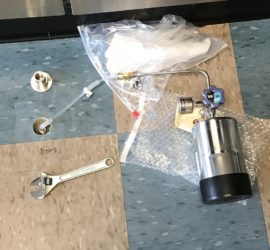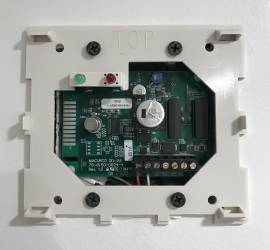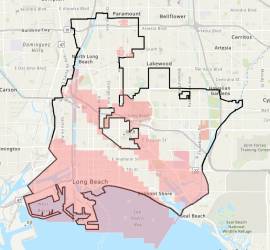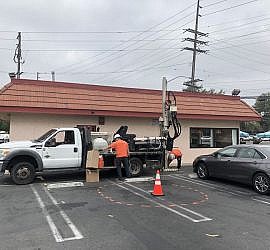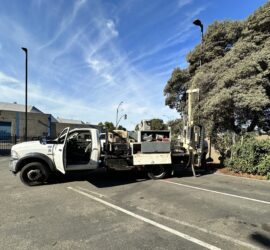Methane Soil Gas Survey
The purpose of a methane soil gas survey is to test a site for subsurface methane and hydrogen sulfide hazards. Ultimately, the survey aims to determine appropriate methane mitigation design parameters for future developments overlying a soil contamination plume. Methane is an odorless gas that migrates through different soil layers and building foundations underground. As a result, it tends to accumulate inside buildings, posing a hazard to occupants. Regulations to mitigate methane soil gas hazards commenced in the 1980s in Los Angeles, after scientists discovered explosions caused by the gas intrusion. Since then, building departments and public works agencies nationwide require a methane soil gas survey and vapor mitigation barrier within specific methane hazard zones. Updated April 8, 2024.
Locations that Require Methane Soil Gas Surveys
Methane in soil gas comes from natural gas pockets underground. These gasses typically originate from the geological decomposition of subsurface organic matter. In most cases, methane soil gas comes from oil and gas fields, natural gas extraction wells, and landfills.
During the late 1800s and early 1900s, oil and gas production was predominant in central and southern California, as well as other parts of the United States. In fact, southern California is rich in crude oil and has an extensive history of oil and natural gas drilling and extraction. As a result, blocks of neighborhoods have been zoned under methane ordinances, to require methane soil gas testing and methane mitigation systems.
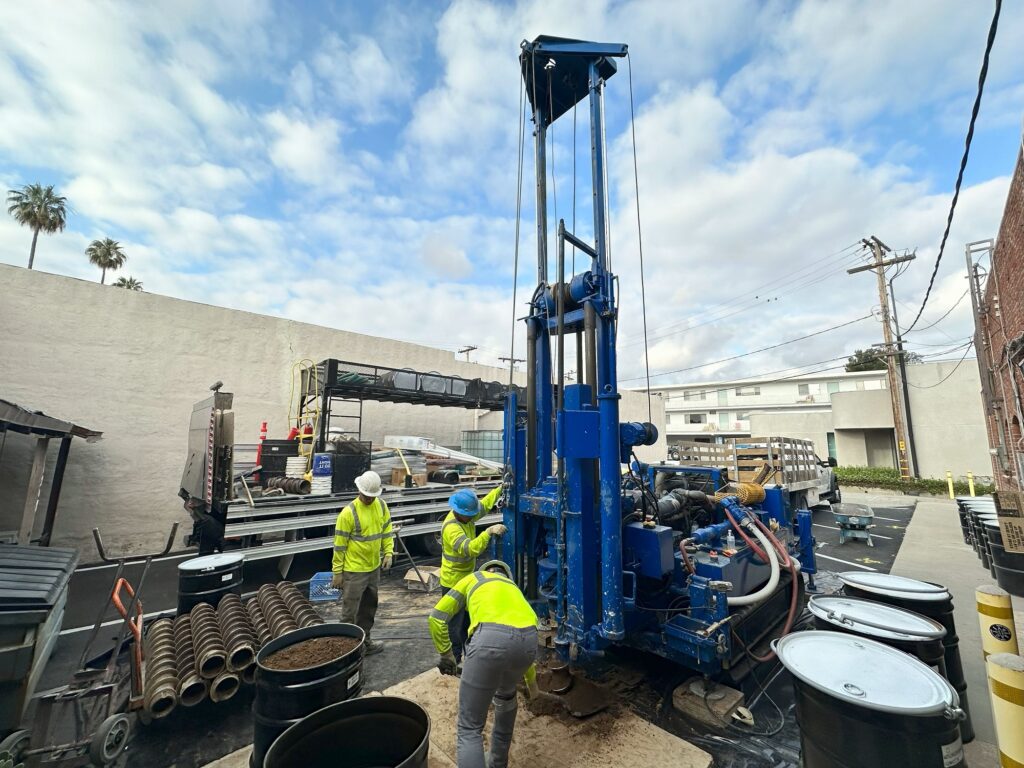
The Original Methane Zones Map from Los Angeles, CA
The City of Los Angeles established high-risk “Methane Zones” which require methane soil gas surveys and mitigation before undergoing construction or demolition. Per the city’s map, there are methane buffer zones and methane zones. And each zone applies a specific set of mitigation standards, on the basis of methane test results. Citywide methane mitigation requirements (for Los Angeles) are available in Ordinance No. 175790 and Ordinance No. 180619.
Other Areas with Similar Methane Zone Standards
Various building departments across the nation have similar methane testing and mitigation standards as the City of Los Angeles. For example, cities such as Long Beach, Signal Hill, Sante Fe Springs, Huntington Beach, Yorba Linda, and others publish methane survey standards that reference the City of Los Angeles criterion.
Moreover, unincorporated cities within Los Angeles County and Orange County also enforce similar methane mitigation standards. To illustrate, these enforcement agencies generally require a methane soil gas survey for sites within 1,000 feet of a landfill or 300 feet of a historical oil & gas well. Accordingly, the County Los Angeles Building Code and its methane soil gas policies are available in Ordinance No. 2002-0076.
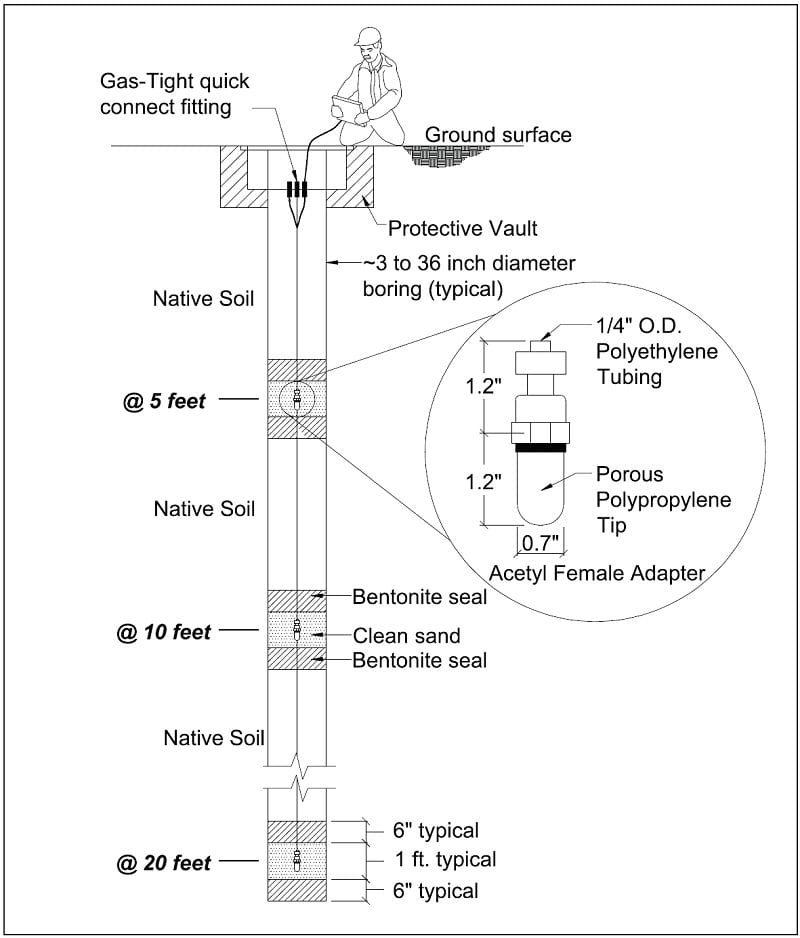
Methane Soil Gas Survey for Environmental Site Assessment
Environmental due diligence reports can comprise a methane soil gas survey as one of many parts. For instance, a Phase 1 Environmental Site Assessment might identify a property boundary within a historical oil production field. As a result, the environmental professional and geologist may recommend a methane hazard survey. Accordingly, a Phase 2 Environmental Site Assessment can be combined with a methane survey to produce qualitative data, conclusions, and recommendations.
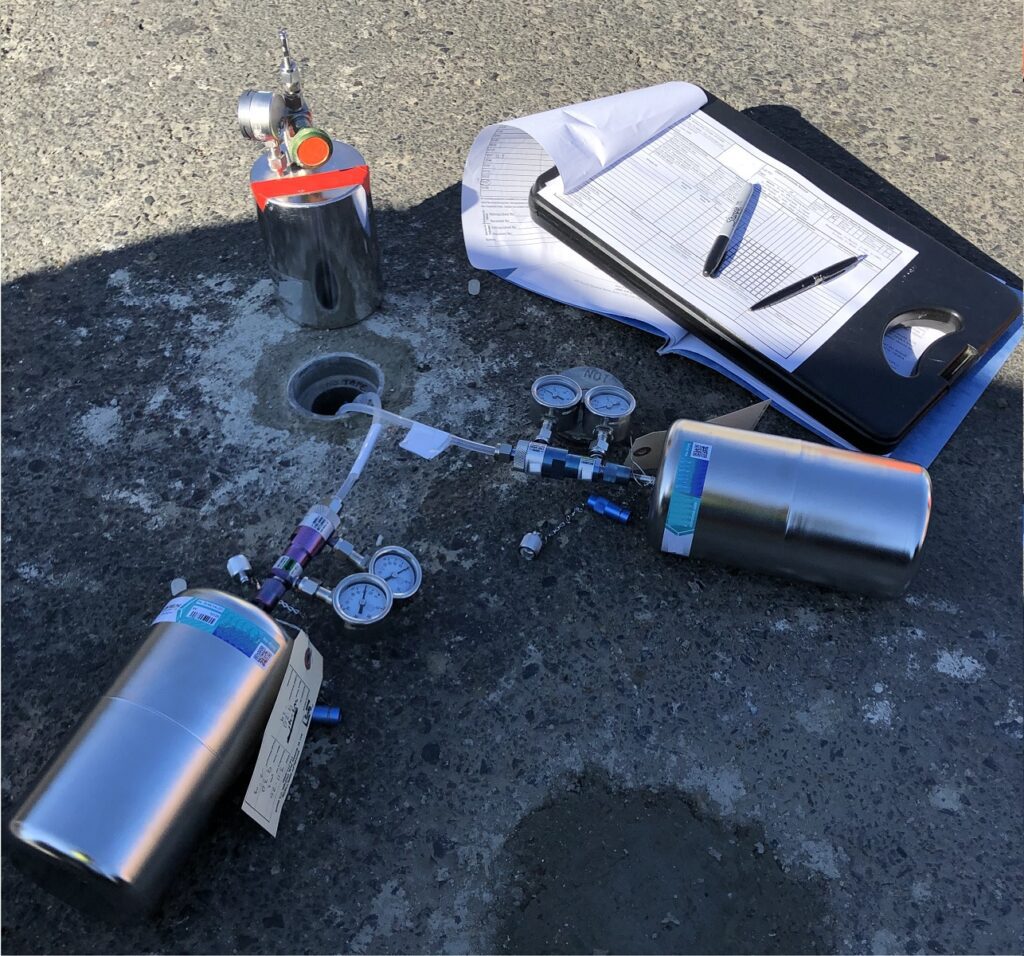
Methane Mitigation Plans
After a methane gas survey, engineers prepare a methane mitigation plan to eliminate the hazards of natural gas intrusion. Local building departments may also require methane mitigation plans to reduce health-related dangers such as asphyxiation or explosion.
Sources of Information:
U.S. EPA
U.S. EPA Guidance for Methane Landfill Gas Sampling & Testing

